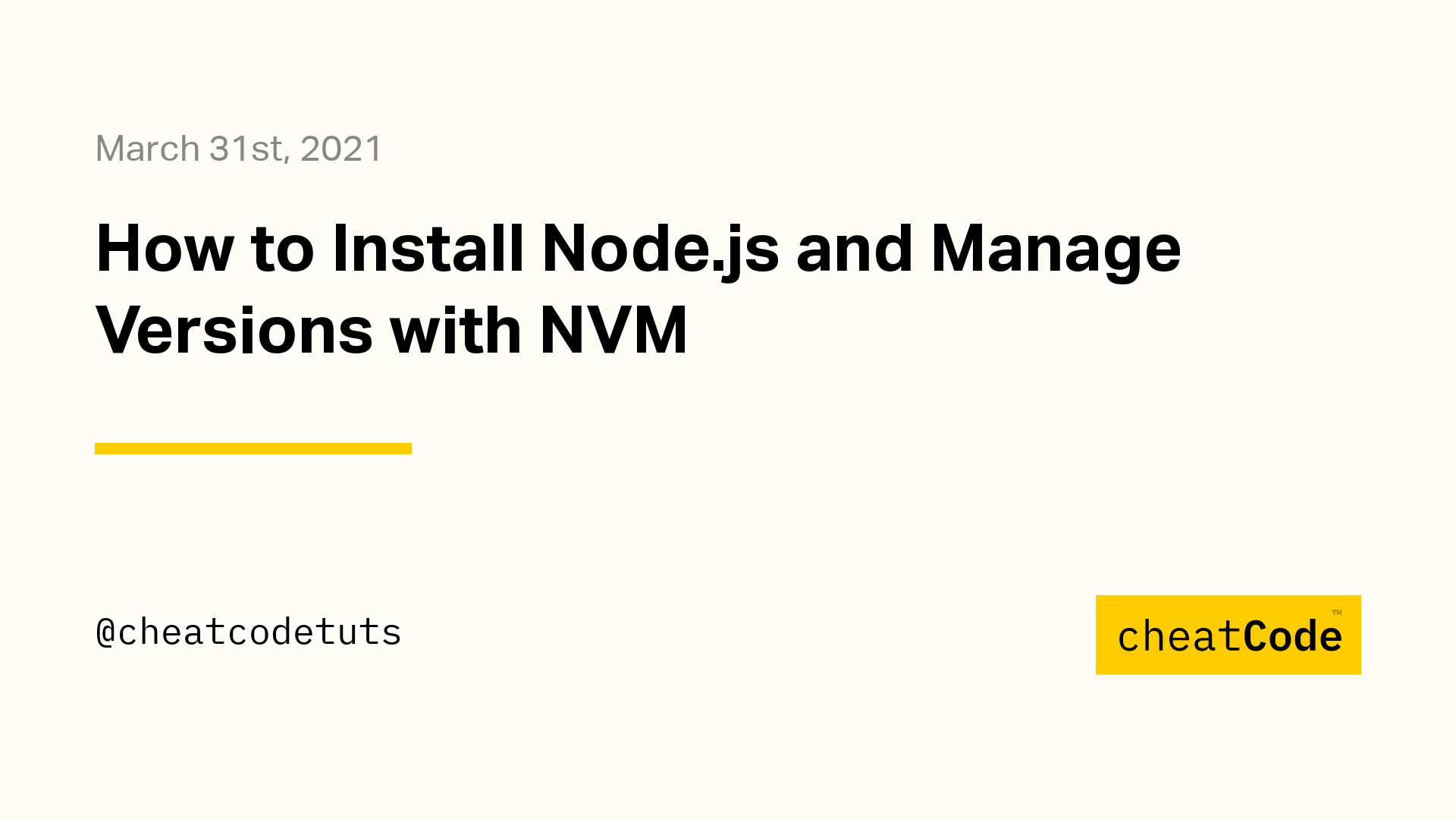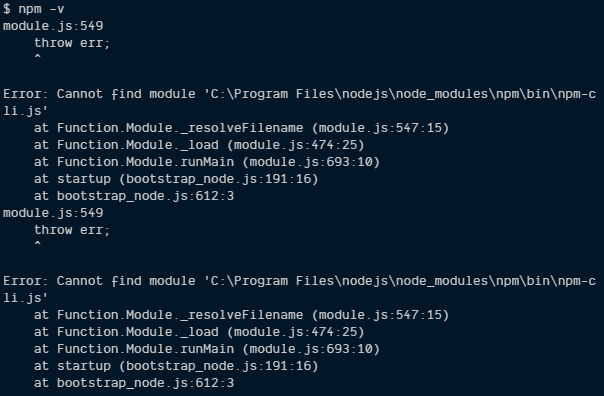
- #Nvm install node cannot found npm install#
- #Nvm install node cannot found npm full#
- #Nvm install node cannot found npm code#
- #Nvm install node cannot found npm windows#
This will force hidden files to be shown in Finder and then restart Finder with killall Finder. To do it, open your terminal back up and run: defaults write AppleShowAllFiles YES Note: For MacOS users, if you're having trouble finding the file, you may need to turn on hidden files in Finder. bash_profile is most common) and open that file in a text editor (e.g., Visual Studio Code). bashrc (this will vary based on your computer's setup but. To locate it, open up a Finder window and click on your username in the left-hand navigation.
#Nvm install node cannot found npm code#
This code be third-party programs (like NVM) or configuration for the terminal itself.įor MacOS users, this is located at the root of your computer in your user directory (e.g., ~/rglover). Your terminal or command line profile includes default settings and code necessary to run your terminal. Next, before you restart it, locate your terminal's profile on your computer. After it completes, you will see a message about closing and re-opening your terminal to start using NVM.įirst, close your terminal (close the entire app to be safe as we need to force our terminal to reload).
#Nvm install node cannot found npm install#
That is the current version as of writing and may have changed since this post was last updated.Īfter you run this, the script at that URL will download the necessary dependencies for NVM and install it on your computer. Note: Be mindful of the /v0.38.0 part here.
#Nvm install node cannot found npm windows#
To do that, on a Mac, open up your Terminal or on Windows your Command Line and run the following: curl -o- | bash Installation instructions for NVM on Github. As the instructions explain there, to install NVM we'll need to use the command line program curl to download NVM onto our computer. To install NVM, head over to the project's repo on Github. NVM is an unofficial command line tool that helps you to easily switch between Node.js versions on your computer.įor example, with NVM installed, if we're currently using Node.js v15.13.0 but the code we're working with requires v8.0.0, with NVM we can run: nvm install 8Īnd then have version 8 of Node.js automatically downloaded, installed, and set as the active Node.js version on our computer. While it's not currently possible to automatically switch between Node.js versions, tools like NVM (Node Version Manager) can help. If you only follow the instructions above and install a single version of Node.js on your computer, this means that if some code was written that only works with an older or newer version of Node.js: you'll run into problems. Managing Versions of Node.js with NVMĪs you progress with Node.js, you will find that different packages (like those found on NPM), different tutorials, and different courses will use different versions of Node.js.
#Nvm install node cannot found npm full#
Recommendation: if this is your first time using Node.js, install the "LTS" version until you get comfortable with the runtime and then install the current version to get access to the current full feature set. Though the "LTS" version is denoted as being "Recommended for Most Users," using the current version helps to reduce confusion when reading tutorials, completing courses, and using third-party tools based on Node.js. This is the most recent iteration of the runtime and is ideal for projects that want to leverage the latest Node.js features, or, for developers who don't mind working around unpatched issues.ĭownloading Node.js from the Node.js website.



On that page, you'll be presented with two options: The easiest way to install Node.js is to head over to the Node.js website and download the installer for your operating system.

To get started, first we'll take a look at installing Node.js the traditional way (and the difference between the versions available), and then we'll see how NVM can help us to manage different versions of Node.js. To fix this, it's best to install the NVM (Node Version Manager) command line tool to help you quickly and easily switch between Node.js versions on your computer. If you're working with a wide range of code (e.g., various projects for work, reading tutorials, or completing a course), this can cause issues when Node.js versions don't match. By default, only one version of Node.js can be used at a time. Before you start working with Node.js, you need to have both the Node.js runtime and NPM (Node Package Manager) installed on your computer.


 0 kommentar(er)
0 kommentar(er)
